First Sumerian Revolt – People Oppose The Harsh Akkadian Empire
A. Sutherland - AncientPages.com - We tend to focus on ancient Sumerian inventions, their significant architectural accomplishments, and their vast scientific knowledge.
Ancient Sumerian clay tablets are praised and admired by archaeologists, historians, and anyone interested in ancient civilizations.
Prisoners escorted by a soldier, on a victory stele of Sargon of Akkad, circa 2300 BC. The hairstyle of the prisoners (curly hair on top and short hair on the sides) is characteristic of Sumerians, as also seen on the Standard of Ur. Louvre Museum. Image credit: ALFGRN - - CC BY-SA 2.0
But what we do not discuss so often is Sumer's turbulent history with all its revolts and wars.
Lugalzagesi Achieved Much Before Sargon the Great Appeared On The Scene
For a short time, around 2350 BC, King Lugalzagesi united the city-states of Sumer by defeating each in turn. He was the last Sumerian king before Sumer's conquest by Sargon of Akkad and the rise of the Akkadian Empire.
After 25 years of rule, Lugalzagesi was defeated by Sargon, later called the Great, a skilled politician who united the independent regions of Sumer into one state. His kingdom is today widely considered the first empire in the world.
Thus, Sargon, who reigned from c. 2334 to 2284 BC, became king over southern Mesopotamia. His vast power extended far beyond Mesopotamia, reaching into Syria and Lebanon in the west, the Elam state in the east, and the Taurus Mountains in Turkey in the north. He had a well-organized army capable of making new conquests and a well-organized, administered centralized Sumerian state. His inscriptions confirm his access to significant land and sea trade routes.
At the time of Sargon's death, his son Rimush became the Akkadian Empire ruler and reigned c. 2284–2276 BC as the King of Akkad. Ancient sources confirm that some Sumerian city-states immediately rebelled against their Akkadian governors and their supporters and replaced them with Sumer rulers and councils almost as soon as Sargon died.
Why Did The Rebels Have To Give Up Their Fight?
Not much is known about this historical and very turbulent period. However, it is known that cities like Lagash, Kazallu, Ur, Adab, Zabala, Kidingira, and Umma had a well-organized resistance against the rule of the Akkadians in Mesopotamia.
In the end, wealthy and influential Sumerians had to accept the rule of Akkadian governors. Rimush confronted extensive opposition from the Sumerian cities, and according to his inscriptions, he had to repress widespread revolts in the Sumerian cities at the beginning of his reign.
Samuel Noah Kramer writes that "in bitter battles involving tens of thousands of troops, he [Rimush] conquered or rather reconquered, the cities of Ur, Umma, Adab, Lagash, Der, and Kazallu, as well as the countries of Elam and Barahshi. 1
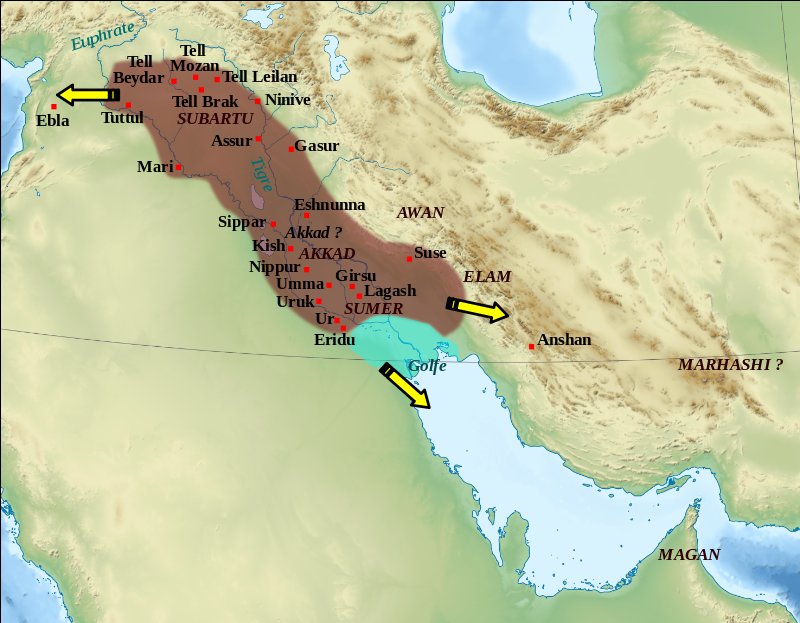
Akkadian Empire map. Image source
Rimush even organized a successful campaign against Elam and returned home with rich booty. He ruled only nine years, and his short reign was not much more than suppressing revolts amongst the people who his father had conquered. And yet, the real threat to his rule came not from these rebellions but from much closer to home. As a precaution against future uprisings, he destroyed city walls and other defensive structures in many Sumerian city-states.
Was it enough to stop dissatisfaction, uprisings, and other forms of discontent?
Did Manishtushu Assassinate His Younger Brother Rimush?
It is not precisely known what happened to Rimush, but it seems that he was assassinated. He was followed by elder brother Manishtushu, who probably violently "removed" Rimush from the throne in 2,270 BC.
Interestingly, the two brothers continued to rule using their father's political and military patterns.
Military encounters between Akkadian and Sumerian forces were bloody. The fightings were fierce and cost many casualties. It has been estimated that as many as twenty thousand Sumerian troops may have been killed, captured, and sold into slavery. That probably represented up to one-third of the number of fighting men from the rebelling Sumer cities.
There has been speculated that Manishtushu was part of a conspiracy to kill Rimush and take the throne, but was it necessary to kill their younger brother?
Rimush successfully suppressed revolts within the Akkadian Empire, and Manishtushu could freely begin building trade routes, gathering a substantial fleet of warships. His goal was also to extend and strengthen the Akkadian Empire. One of Manishtushu's inscriptions says:
"When he [Manishtushu] had crossed the Lower Sea (it means the Persian Gulf) in ships, thirty-two kings gathered against him, but he defeated them and smote their cities and prostrated their lords and destroyed [the whole countryside] as far as the silver mines." 2
Yet Another Assassination And New Revolts
However, in 2,255 BC, Manishtushu, like his brother Rimush, was assassinated after fifteen years of rule.
Rimush and Manishtushu and all the successors of Sargon struggled with raids of foreign tribes and rebellions of Sumerian cities. During Naram-Sin's reign, a great rebellion broke out.
Naram-Sîn reigned 2261-2224 B.C and was the last great king of the Akkadian Empire and Sargon's grandson. He was considered the most prominent Akkadian king after Sargon. He, too, had many problems with the revolts and rebels.
The whole country revolted against him, and the uprising had two leaders; one led the north's cities, and the other stood at the head of the south's towns.
Naram-Sin suppressed both rebellions and retained power and during his reign, the Akkadian empire was at least as large as under Sargon and probably even more extensive.
Written by – A. Sutherland - AncientPages.com Senior Staff Writer
Updated on October 06, 2023
Copyright © AncientPages.com All rights reserved. This material may not be published, broadcast, rewritten or redistributed in whole or part without the express written permission of AncientPages.com
Expand for referencesReferences:
1 S. N. Kramer The Sumerians
History, Innovating. The Sumerians: A Complete Guide to Sumerian History And The Sumerian Civilization.
Hamblin, William J. Warfare in Ancient Near East to 1600 BC
More From Ancient Pages
-
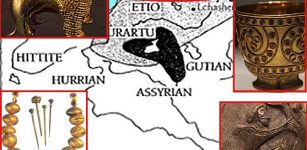 Trialeti Culture: Ancient Caucasian People Who Still Hold Their Secrets
Civilizations | Jul 8, 2017
Trialeti Culture: Ancient Caucasian People Who Still Hold Their Secrets
Civilizations | Jul 8, 2017 -
 ChatGPT Is Confronting, But Humans Have Always Adapted To New Technology – Ask The Mesopotamians, Who Invented Writing
Featured Stories | Feb 13, 2023
ChatGPT Is Confronting, But Humans Have Always Adapted To New Technology – Ask The Mesopotamians, Who Invented Writing
Featured Stories | Feb 13, 2023 -
 Cato The Younger – Mortal Enemy Of Julius Caesar Was A Man Who Hated Luxury, New Ideas And Was Immune To Bribes
Featured Stories | Mar 18, 2025
Cato The Younger – Mortal Enemy Of Julius Caesar Was A Man Who Hated Luxury, New Ideas And Was Immune To Bribes
Featured Stories | Mar 18, 2025 -
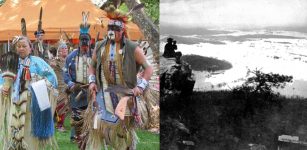 Ancient Native American Stories Of Great Floods In Tennessee Confirmed By Scientists – 1867 Flood Was Not The Worst One
News | Aug 26, 2020
Ancient Native American Stories Of Great Floods In Tennessee Confirmed By Scientists – 1867 Flood Was Not The Worst One
News | Aug 26, 2020 -
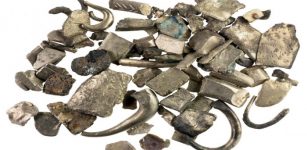 Hacksilber Hoard Dated To 11th Century BC: Eastern Mediterranean Silver Trade Reconstructed
Archaeology | Jul 5, 2021
Hacksilber Hoard Dated To 11th Century BC: Eastern Mediterranean Silver Trade Reconstructed
Archaeology | Jul 5, 2021 -
 Napoleon Bonaparte’s Nightmare Vision Inside The Great Pyramid
Featured Stories | Jul 12, 2014
Napoleon Bonaparte’s Nightmare Vision Inside The Great Pyramid
Featured Stories | Jul 12, 2014 -
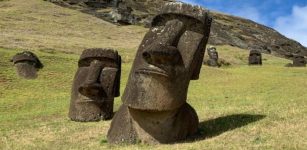 DNA Results Show: Polynesians, Native Americans Made Contact Before European Arrival
Archaeology | Jul 9, 2020
DNA Results Show: Polynesians, Native Americans Made Contact Before European Arrival
Archaeology | Jul 9, 2020 -
 Genetic Evidence Retrieved From 800,000-Year-Old Human Tooth
Human Beginnings | Apr 2, 2020
Genetic Evidence Retrieved From 800,000-Year-Old Human Tooth
Human Beginnings | Apr 2, 2020 -
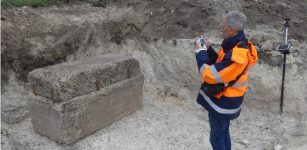 Intact 1,800-Year-Old Roman Sarcophagus With Unexpected Treasures Found In France
Archaeology | Sep 26, 2023
Intact 1,800-Year-Old Roman Sarcophagus With Unexpected Treasures Found In France
Archaeology | Sep 26, 2023 -
 Ancient Objects Used In Unknown Celtic Ritual Discovered In Polish Lake
Archaeology | Jul 22, 2024
Ancient Objects Used In Unknown Celtic Ritual Discovered In Polish Lake
Archaeology | Jul 22, 2024 -
 Bizarre Story Of Scottish Penkaet Castle
Featured Stories | Apr 18, 2020
Bizarre Story Of Scottish Penkaet Castle
Featured Stories | Apr 18, 2020 -
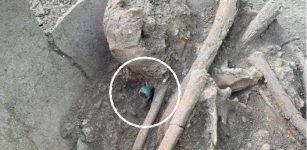 1,200-Year-Old Human Skeleton With A Jade Ring Unearthed In El Tigre Archaeological Zone
Archaeology | Aug 15, 2023
1,200-Year-Old Human Skeleton With A Jade Ring Unearthed In El Tigre Archaeological Zone
Archaeology | Aug 15, 2023 -
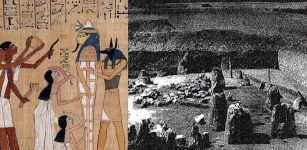 Secrets About ‘Tennessee’s Ancient Egyptian Temple’ Revealed
Civilizations | Aug 15, 2018
Secrets About ‘Tennessee’s Ancient Egyptian Temple’ Revealed
Civilizations | Aug 15, 2018 -
 Graves Of Celtic Princes Reveal How Powerful Women Were In Pre-Roman Germany
Archaeology | Jun 4, 2024
Graves Of Celtic Princes Reveal How Powerful Women Were In Pre-Roman Germany
Archaeology | Jun 4, 2024 -
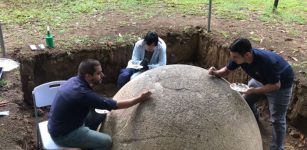 Six Ancient Giant Stone Spheres Recovered From The Diquís Delta, Costa Rica
Archaeology | Apr 7, 2022
Six Ancient Giant Stone Spheres Recovered From The Diquís Delta, Costa Rica
Archaeology | Apr 7, 2022 -
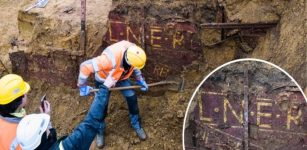 Mysterious Railway Car Discovered Under An Old Fortress In Antwerp, Belgium
Archaeology | Apr 12, 2024
Mysterious Railway Car Discovered Under An Old Fortress In Antwerp, Belgium
Archaeology | Apr 12, 2024 -
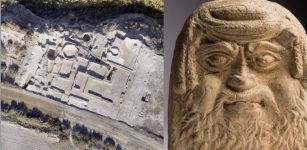 Huge Roman Forum Discovered In Unknown Ancient City In Spain
Archaeology | Sep 4, 2023
Huge Roman Forum Discovered In Unknown Ancient City In Spain
Archaeology | Sep 4, 2023 -
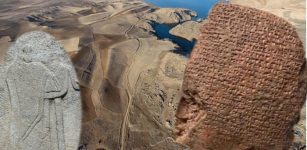 3,300-Year-Old Hittite Cuneiform Tablet Found In Büklükale Deciphered!
Archaeology | Apr 2, 2024
3,300-Year-Old Hittite Cuneiform Tablet Found In Büklükale Deciphered!
Archaeology | Apr 2, 2024 -
 Ancient Underground Tombs And Lightening God In Peru – Complex Concepts Of Death And Renewal Revealed
Archaeology | May 22, 2018
Ancient Underground Tombs And Lightening God In Peru – Complex Concepts Of Death And Renewal Revealed
Archaeology | May 22, 2018 -
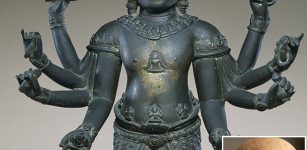 A 1.9-Meter Statue Of A Guard And Part Of A Medicine Buddha Unearthed By Angkor Archaeologists
Archaeology | Sep 1, 2017
A 1.9-Meter Statue Of A Guard And Part Of A Medicine Buddha Unearthed By Angkor Archaeologists
Archaeology | Sep 1, 2017

